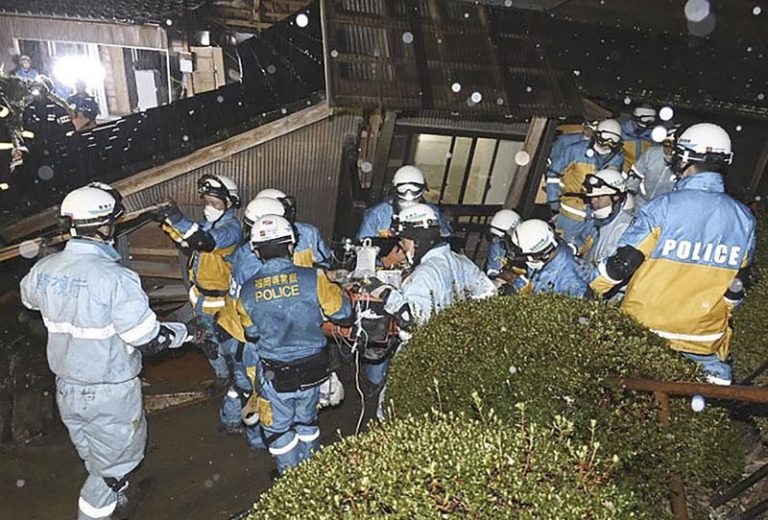An elderly woman in her 90s has been rescued from under the rubble of a two-story house more than five days after a powerful earthquake struck Japan.
Rescuers found the woman in Suzu City in Ishikawa prefecture on Saturday evening – 124 hours after the quake struck – and took her to a nearby hospital, according to Japan’s public broadcaster NHK.
On Sunday, a doctor told reporters that the woman is well enough to have conversations, but her legs are injured.
Kume Takanori, a member of the emergency rescue team, told NHK that the woman’s knees had been stuck under furniture within a very narrow space between the first and second floor. It took hours to free her, Takanori said.
The 7.5 magnitude earthquake that struck central Japan on January 1 triggered tsunami alerts as far away as eastern Russia. Thousands living in coastal areas were forced to evacuate their homes as buildings and roads collapsed. Many structures also burned down.
The death toll from the disaster is at least 126, according to the latest figures shared by Japanese authorities on Saturday.
In the event of a natural disaster, the first 72 hours are “absolutely critical” for search and rescue efforts. Experts call this the “golden period” for finding survivors, as the conditions of people trapped and injured can deteriorate quickly afterward.
It has been a race against time for teams on the ground to save people trapped under rubble.
The full extent of the damage is still unknown but more than 200 people remain unaccounted for, Japanese officials say. Search and rescue operations are continuing in Ishikawa.
NHK reported that many roads are still blocked, posing difficulties for emergency personnel and vehicles to reach survivors.
Addressing this in a statement shared on X, Japanese Prime Minister Fumio Kishida said traffic restrictions would be implemented around the earthquake zone from Sunday.
Traffic will be barred from entering the affected areas to allow for disaster recovery-related vehicles to pass freely.

